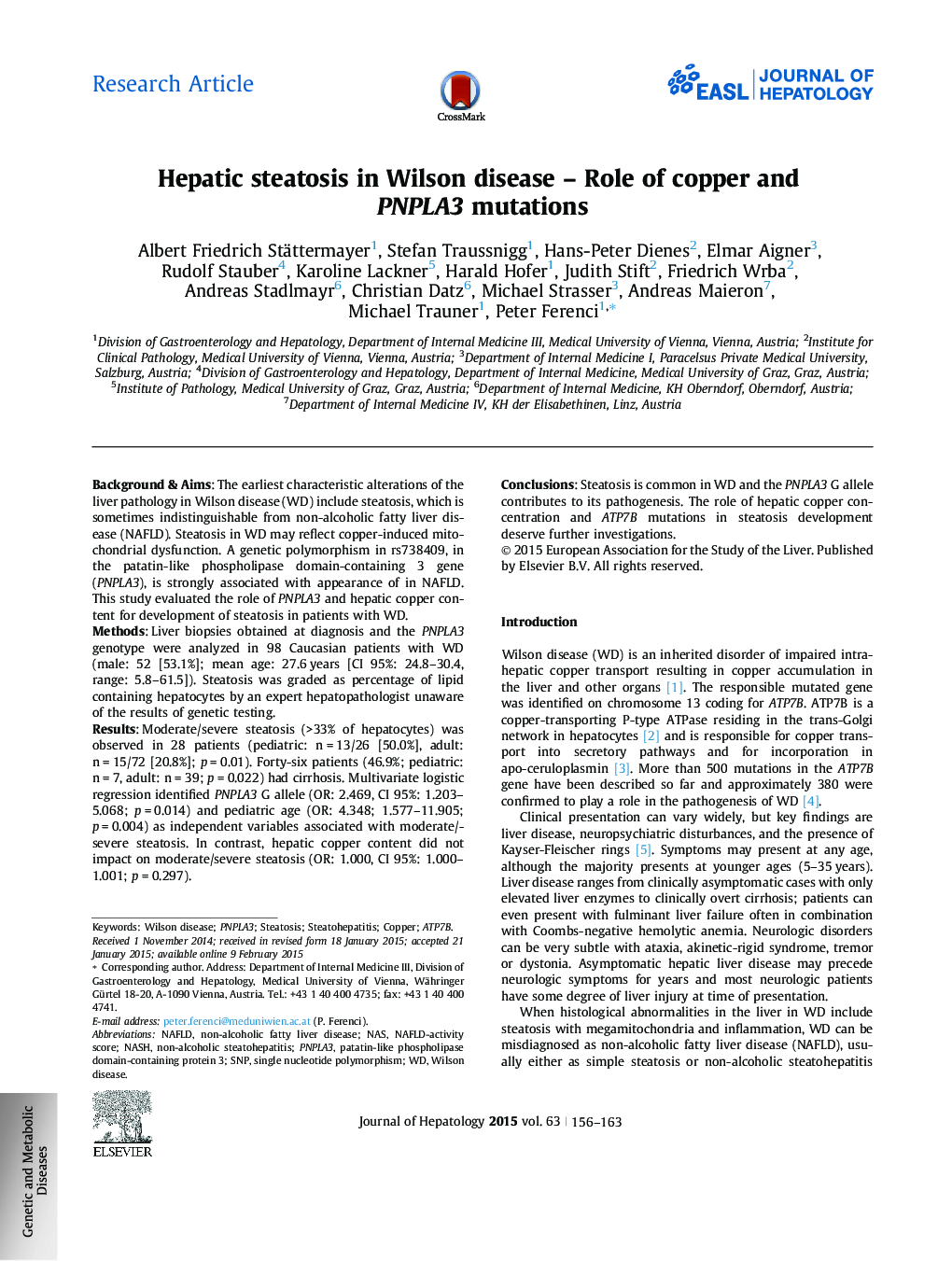| Article ID | Journal | Published Year | Pages | File Type |
|---|---|---|---|---|
| 6102499 | Journal of Hepatology | 2015 | 8 Pages |
Background & AimsThe earliest characteristic alterations of the liver pathology in Wilson disease (WD) include steatosis, which is sometimes indistinguishable from non-alcoholic fatty liver disease (NAFLD). Steatosis in WD may reflect copper-induced mitochondrial dysfunction. A genetic polymorphism in rs738409, in the patatin-like phospholipase domain-containing 3 gene (PNPLA3), is strongly associated with appearance of in NAFLD. This study evaluated the role of PNPLA3 and hepatic copper content for development of steatosis in patients with WD.MethodsLiver biopsies obtained at diagnosis and the PNPLA3 genotype were analyzed in 98 Caucasian patients with WD (male: 52 [53.1%]; mean age: 27.6 years [CI 95%: 24.8-30.4, range: 5.8-61.5]). Steatosis was graded as percentage of lipid containing hepatocytes by an expert hepatopathologist unaware of the results of genetic testing.ResultsModerate/severe steatosis (>33% of hepatocytes) was observed in 28 patients (pediatric: n = 13/26 [50.0%], adult: n = 15/72 [20.8%]; p = 0.01). Forty-six patients (46.9%; pediatric: n = 7, adult: n = 39; p = 0.022) had cirrhosis. Multivariate logistic regression identified PNPLA3 G allele (OR: 2.469, CI 95%: 1.203-5.068; p = 0.014) and pediatric age (OR: 4.348; 1.577-11.905; p = 0.004) as independent variables associated with moderate/severe steatosis. In contrast, hepatic copper content did not impact on moderate/severe steatosis (OR: 1.000, CI 95%: 1.000-1.001; p = 0.297).ConclusionsSteatosis is common in WD and the PNPLA3 G allele contributes to its pathogenesis. The role of hepatic copper concentration and ATP7B mutations in steatosis development deserve further investigations.
